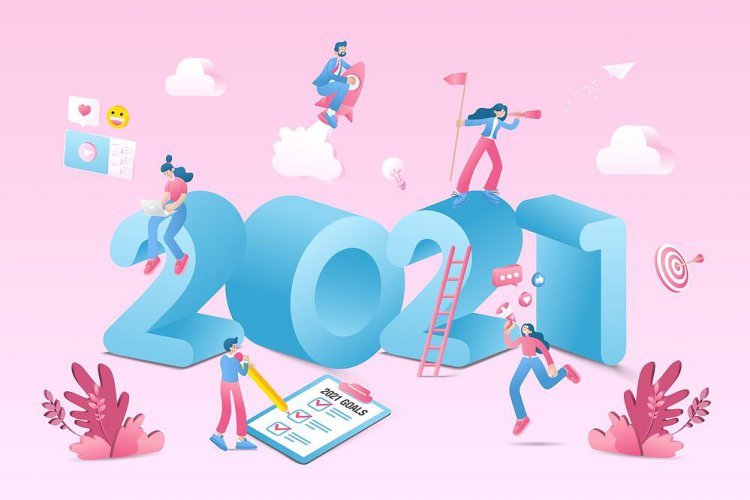Even as the world floats around a lockdown-no-lockdown situation while traffic movements remain unpredictable in the Outdoor Industry, Marketers Innovators believe that the industry will quickly bounce back with digital fatigue setting in while technology, data analytics, and measurement to drive it forward.
According to GroupM forecasts, global advertising will grow 12.3% in 2021, while WARC’s latest report states that Out of Home (OOH) will be the second-fastest-growing medium in 2021. As we continue braving through the year cautiously awaiting the vaccine distribution, smart advertisers can use growing trends to increase their Return-on-investment (ROI). Here are some notable trends to begin rebuilding the industry in 2021.
Rise of Programmatic In The Outernet Media
Covid-19 has nudged advertisers to execute audience-led campaigns with shorter turnaround time. Due to uncertainty, no one can be sure what will happen next or what the lockdown restrictions will be like. With location data leading the way when audience movements remain unpredictable, programmatic enables campaigns to activate with a shorter turnaround time and contextual messaging capabilities.
Partnerships between Demand-Side Platforms (DSPs) and Supply-Side Platforms (SSPs) have also picked up resulting in more inventories available in the media marketplace. At the same time, we see a rise in non-traditional Outernet Media. Kiosks, automatic sanitising dispensers, tabletops, rideshare vehicles, transit hubs becoming new advertising targets for monetisation.
Leveraging Mobile + OOH
When people movement was restricted, there was an immediate change in distinct consumer habits that would normally take years to change. With programmatic OOH, marketers can run numerous campaigns with detailed targeting and dynamic creative options which can be optimised to more hyperlocal advertising. This has become a popular trend for advertisers to integrate their campaigns with mobile.
There is much proof around integrated campaigns being highly effective and mobile is not excluded from this. A study by USA Touchpoints highlighted that when a campaign integrates both OOH and smartphones, application rate increases by 316%. Meanwhile, according to a Nielsen report, two-thirds of OOH viewers, in a total of 66% took some kind of brand action on their mobile devices after seeing an OOH ad first. As mobile and OOH are the most connected media of all media, it is natural that mobile is increasingly important in the OOH mix.
Brand Agility And Flexibility With Data
Data played a key role when making predictions about audiences during the pandemic when audience movements were unpredictable. While advertisers adopted more agile methodologies and slowly manoeuvring their campaigns where deemed necessary, unlocking the capabilities of location data was one of the key tools in creating a competitive advantage of building a highly customer-centric OOH experience during these turbulent times.
As we move closer to near real-time data measurement, actionable insights into consumer behaviour and improved customer experience with targeted personalisation will be the key differentiator for your outdoor campaigns. OOH will move towards more granular measurement models with more timely data updates. These changes will allow OOH to be measured more similarly to other media and will also support the continued adoption of programmatic Digital Out-of-Home (pDOOH).
On another note, digital capabilities will particularly find favour with advertising efforts that are agile and flexible because the integrated ecosystem will enhance personalisation and localisation of DOOH.
Members of the Outernet Marketing Innovation Group, coming from multiple industries, share their thoughts and comments on the OOH trends in marketing:

Jaikishin Chhaproo, Head of Media and PR at ITC Limited PCPB in India says “The shift in the digital ecosystem with the metrics will be the key priority in 2021. India as a market is at the anvil of the big shift to Digital OOH – the factors that will aid this shift are data, measurement and analytics.”
“Traditional OOH is significantly unorganised, especially when it comes to the above metrics. The advertiser has a restrictive outlook on the campaign. This coupled with the on-ground challenges like pulling down the illegal billboards in markets like Delhi, no billboards in the city of Bangalore or the surrendering of tender rights in Mumbai. The average time of interaction with an OOH asset is equivalent to the time that a viewer interacts with ads on digital medium but the key difference is the abundance of data on digital medium vs negligible data on OOH.” he adds.

Gesit Kurmaraningrat, Senior Marketing Strategist of SehatQ Indonesia also shares his thoughts. “OOH, media can further develop in 2021 with more options for integrating with digital or online platforms, such as mobile integration, social media, and CRM push. In 2020 many people rarely leave the house, they will enjoy their time outside the home and travelling, opening up opportunities from a creative side in terms of their communication content.”

Claudia Rossalia, Associate Offline Media Manager of Pegipegi Indonesia comments “From my point of view, I see three prospective OOH trends that will emerge in 2021. Firstly, the growth of Programmatic Advertising and interactive DOOH due to the nature of campaigns in unpredictable times and the flexibility needed in changing aspects of the campaign on short notice. Mobile Integration will also pick up in Outdoor Advertising as well as Multi-Channel Integration for the benefit of reaching our audiences more effectively on more personalised levels.”

Ravi Shankar, Chief Growth and Platform Officer of AirAsia comments “Now more than ever, it’s important to measure the effectiveness of your whole marketing efforts across all channels, be it online or offline. We are seeing the behaviour of the consumers changing not just on the online but also offline, while the demand for every business will come back to normal soon, it is a good opportunity to plan and test your hypothesis in OOH with measurable results, The effectiveness of these experiments can potentially change how you plan you marketing mix and campaign strategy in the future.”

















